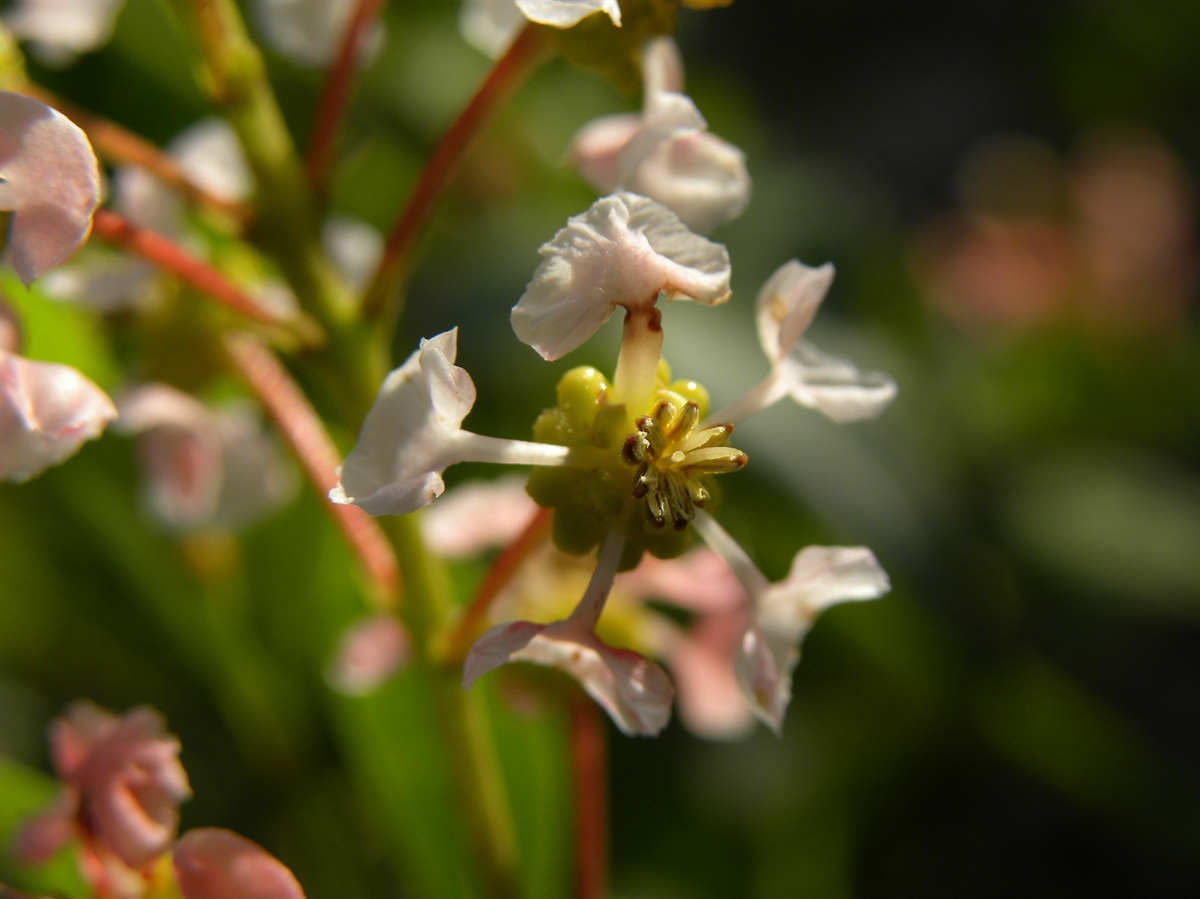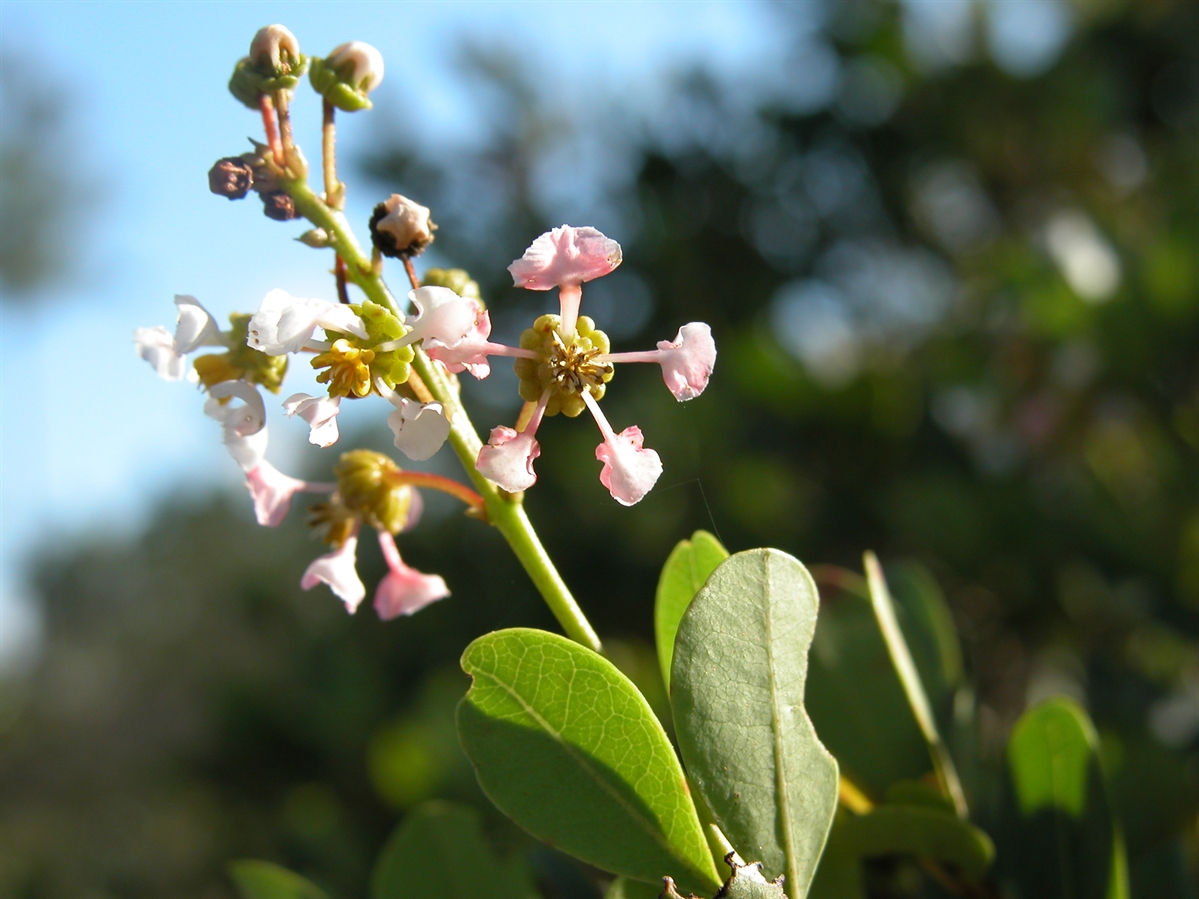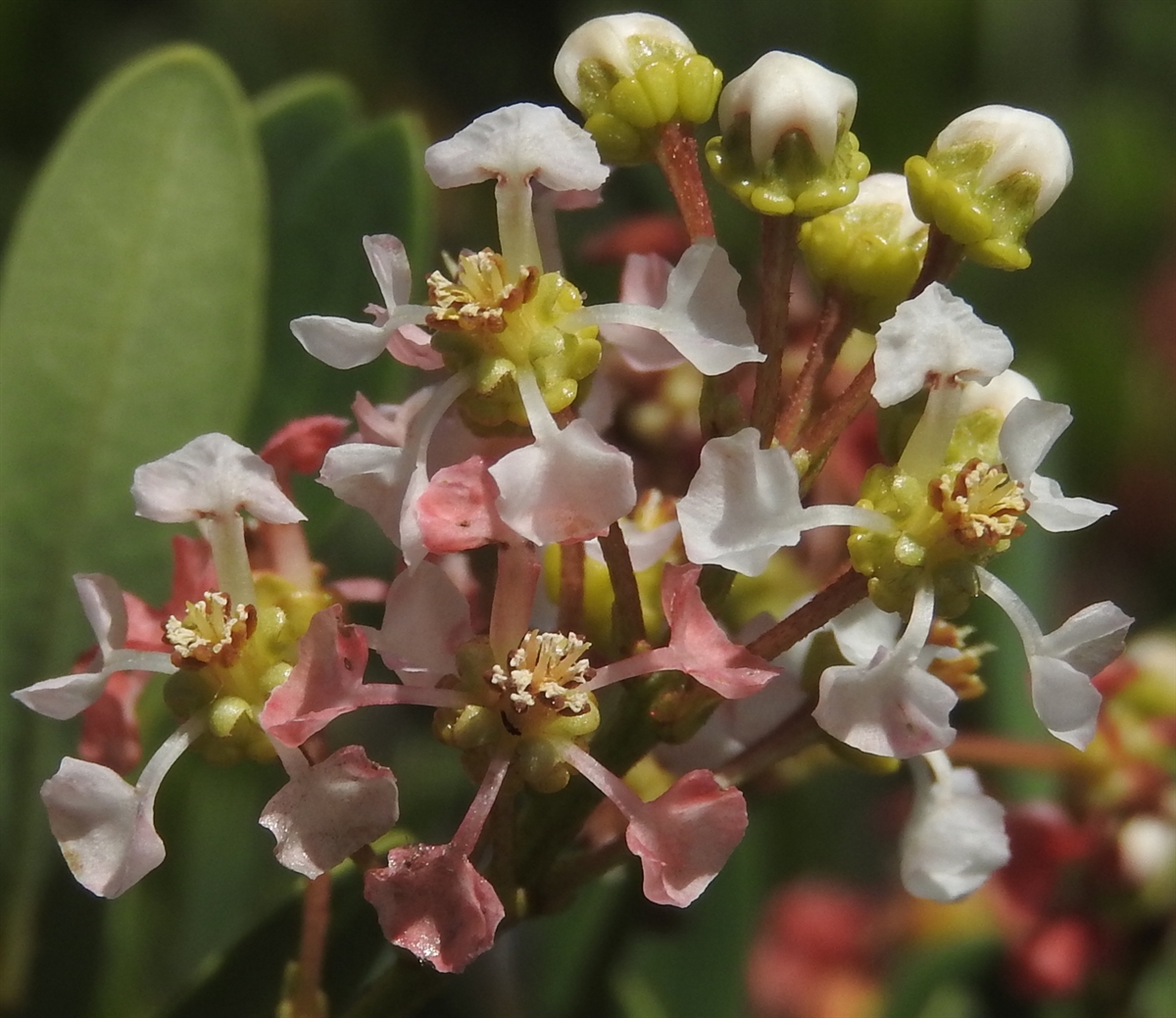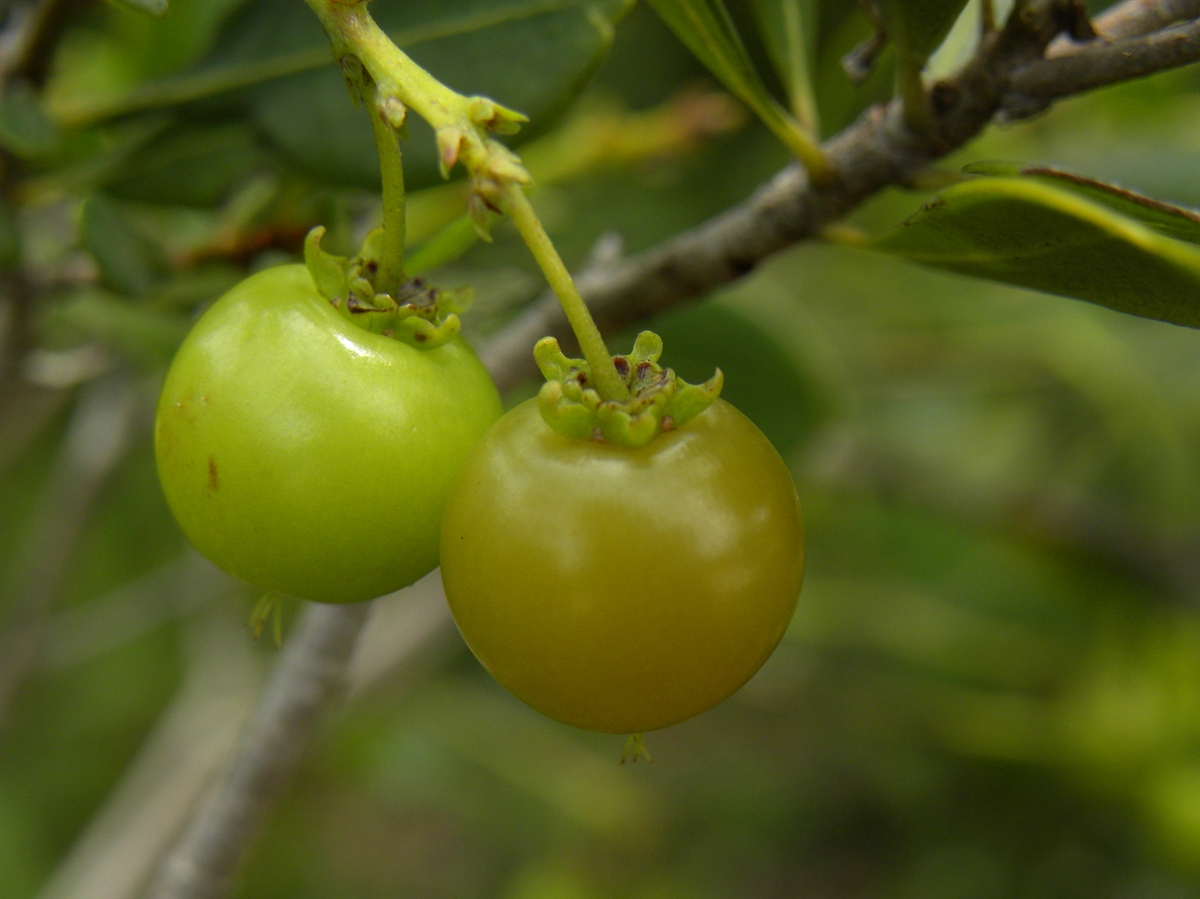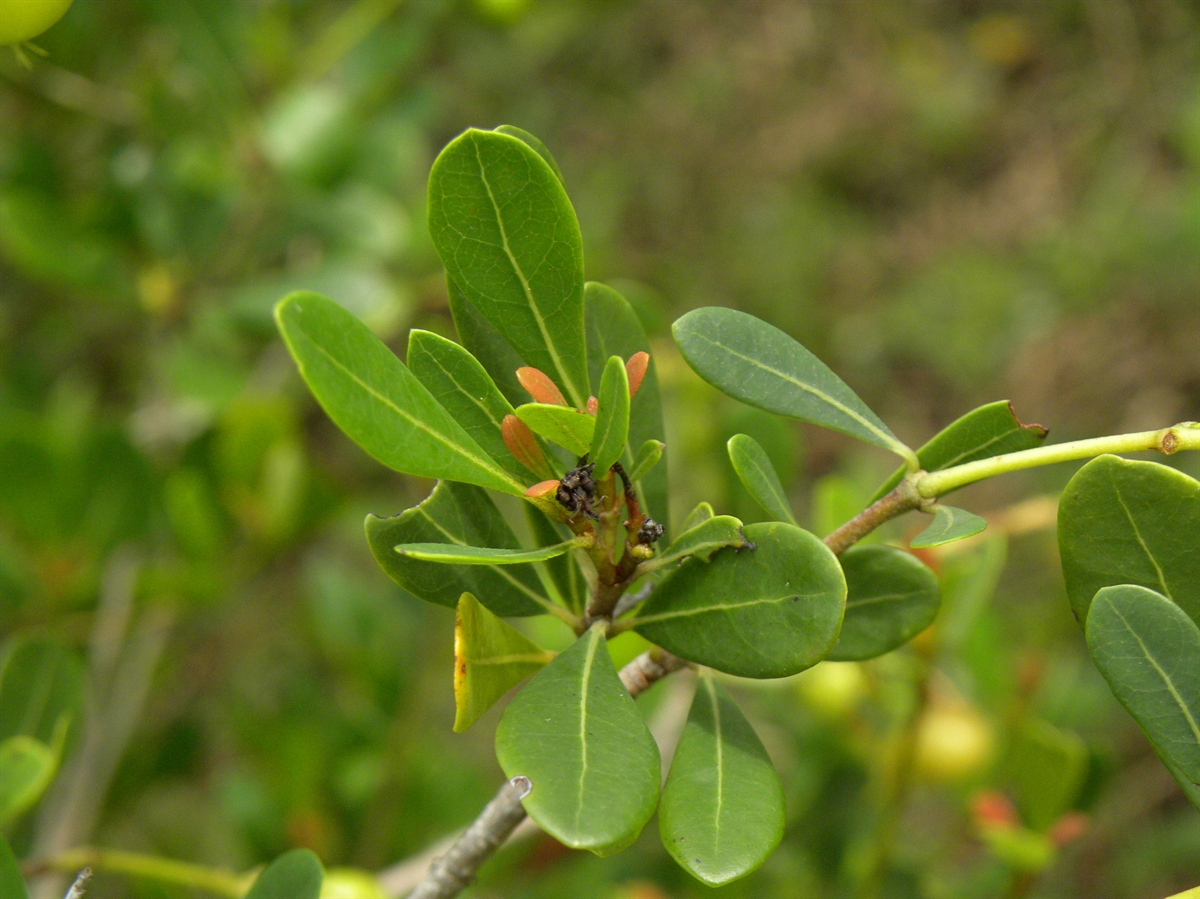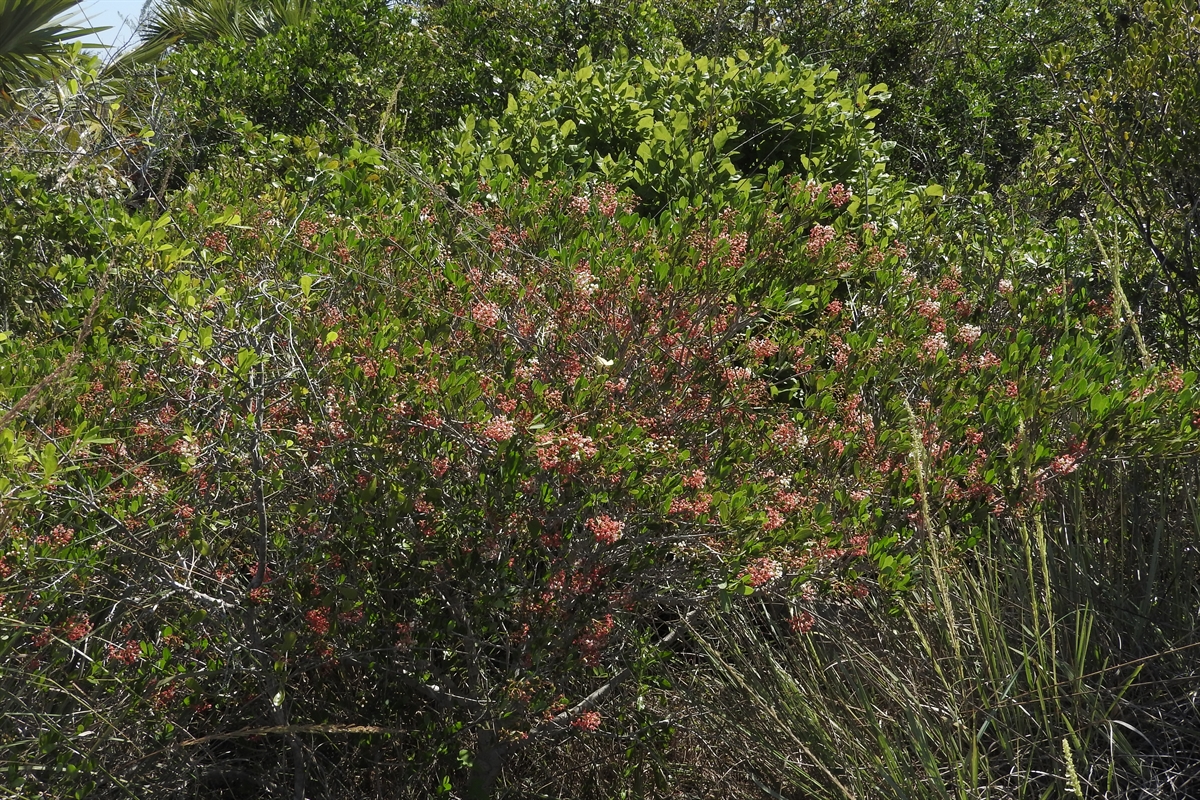Habit: Byrsonima lucida grows as a medium shrub to small tree up to 7 m in height (typically shorter). The leaves are arranged oppositely, to 6 cm in length, obovate to spathulate with a retuse-rounded-acute leaf apex, and an entire margin. The leaf surfaces have flattened trichomes and are dark green adaxially and pale abaxially.
The actinomorphic flowers are arranged in racemes or panicles. At the base of the flower are 3 bracts and a series of sepal glands in pairs. The calyx has 5 unfused green sepals. The corolla has 5 unfused, clawed petals that change from white to red. There are 10 stamens. The ovary is superior with 3 locules and numerous seeds. The fruit is a drupe that turns orange-brown at maturity. The sepal glands remain on the fruit as it matures.
Habitat: Byrsonima lucida grows in Dry Broadleaf Evergreen Formation- Forests/Woodlands/Shrublands (coppice, scrublands, palm woodlands) as well as Pine Woodlands, near Fresh Water Wetlands, and Human Altered environments.
Distribution: Byrsonima lucida occurs on all island groupings within the Lucayan Archipelago as well as Florida and the entire Caribbean region.
Medicinal/Cultural/Economic usage: Byrsonima lucida is used in the Bahamas for ob-gyn (to clear lungs after birth, labor, pregnant women), gastrointestinal issues (diarrhea), and in strengthening teas,
It is also used in the horticultural trade for its beautiful flowers as well as its ability to attract birds and butterflies.
The fruits are edible and ferment easily and can be used to make liquor.
